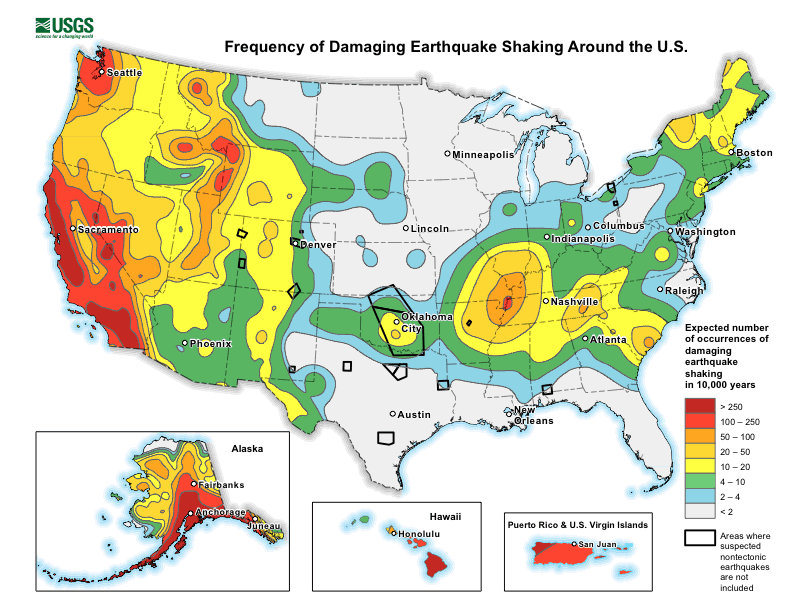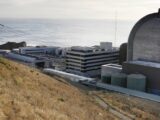
Rising earthquake-insurance costs put millions of Missourians, economy at risk
August 3, 2021The continually rising cost of earthquake insurance is putting millions of Missourians and its economy at risk, according to a new report from the Missouri Department of Commerce and Insurance (DCI).
The cost of some earthquake insurance policies for homes and businesses increased 760% during the past 20 years, according to the report, “2020 Residential Earthquake Coverage in Missouri.” Some policy holders are paying deductibles as high as 20% to 25%.
The New Madrid Seismic Zone covers the southeast quadrant of the state, from the bootheel up the Mississippi River to include the entire St. Louis Metropolitan Statistical Area, according to the DCI’s report. Maps from the Central United States Earthquake Consortium (CUSEC) show the zone stretches into northeast Arkansas, western Tennessee and Kentucky, and southern Illinois.
“We are very concerned about the state of earthquake insurance in Missouri,” Chlora Lindley-Myers, director of the DCI, said in a statement announcing the publication of the report. “There is an increasing gap between the insured and uninsured in the highest risk region surrounding the New Madrid fault. The cost of earthquake coverage in that area is prohibitively expensive and some insurers have pulled out altogether. This is a multi-state issue and will require multi-state collaboration to address it.”
Messages requesting comment on the report were made with the Missouri Insurance Coalition, the Missouri Association of Insurance Agents, and several insurance agents in southeast Missouri but were not returned.
Insurance companies take into account the damage and lives lost after earthquakes of similar magnitudes. In 1994, a 6.7-magnitude earthquake in Northridge, Calif., killed 33 people and caused $20 billion in damage, according to the CUSEC website. In 1995, a 6.9-magnitude earthquake in Kobe, Japan, killed 5,500 people and caused $100 billion in damage, according to CUSEC.
CUSEC scientists report New Madrid is the largest active zone in the U.S. east of the Rocky Mountains. It estimates the probability of a magnitude 6 or larger earthquake occurring in the New Madrid zone in any 50-year period to be 25 to 40%. DCI estimates Missouri’s economic loss for a significant earthquake could be $300 billion.
“Insurance actuaries look over information and compare the cost and frequency of events, the locations and predictability of an event,” said Lori Croy, communications director of the DCI. “One of the problems with earthquakes is there’s no way to accurately predict an earthquake, the severity, or the timeliness of an occurrence.”
Insurers have increasingly pulled out of high-risk areas of the state or have implemented stricter underwriting standards. Policy holders are self-insuring a significant amount through higher deductibles and separate deductibles for structures and contents.
In the New Madrid region of the state – Mississippi, New Madrid, Pemiscot, Dunklin, Stoddard and Scott Counties – the percentage of residencies with earthquake coverage declined by 47 percentage points between 2000 and 2020, from 60.2 to 12.7%. The cost of earthquake insurance increased 102% in the last 10 years in the region.
“Missouri is a unique geologic environment as far as earthquakes are concerned,” Croy said. “That is part of the problem.”
A survey of Missouri insurers found approximately 20% of policies for the region don’t offer coverage with a deductible less than 25% of the value of the insured property. Less than 2% offer policies with deductibles as low as 5%, compared to 43% of earthquake policies in the rest of the state.
In 90 of Missouri’s 116 counties, fewer than 20% of residencies have earthquake coverage. Only four counties have at least half of residencies with earthquake insurance – Cape Girardeau, St. Charles, St. Louis and Jefferson.
The DCI, CUSEC, the Missouri Department of Public Safety and State Emergency Management and the Federal Emergency Management Agency are planning the first “Central U.S. Quake Strategy Summit” in September in St. Louis. “We’ll be inviting leading innovators and visionaries to start conversations geared toward solving this critical issue,” Lindley-Myers said. “It is imperative that we plan our resiliency and recovery strategies before a major seismic event strikes the New Madrid region.”
This article was originally posted on Rising earthquake-insurance costs put millions of Missourians, economy at risk


